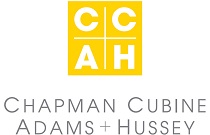
|
Take a Common Sense Approach to Multi-Channel Marketing
|
|
Posted by Becky Odum at Sep 26, 2012 07:02 AM CDT
|
 It’s certainly true that multi-channel marketing has been around for as long as marketing has been around. Communicating with your audience via printmedia, radio, television, mail, phone, Internet and email is a regular part of most marketing plans. The challenge for fundraisers is to understand how best to use limited resources to make the most impact on your overall fundraising efforts. And with shrinking cost budgets and conflicting input from internal departments, the challenges can seem quite daunting indeed!
It’s certainly true that multi-channel marketing has been around for as long as marketing has been around. Communicating with your audience via printmedia, radio, television, mail, phone, Internet and email is a regular part of most marketing plans. The challenge for fundraisers is to understand how best to use limited resources to make the most impact on your overall fundraising efforts. And with shrinking cost budgets and conflicting input from internal departments, the challenges can seem quite daunting indeed!
In fact, some of the most common things I hear from nonprofit direct marketers are “I just don’t know what will make the most impact for the least cost”, “We’ve tried multi-channel approaches but the cost isn’t easy to justify when the results are so minimal”, or even more bluntly, “Email fundraising doesn’t work well for us and our board hates telemarketing, what can I do?”.
If you, too, are still struggling to find the right method for integrating your fundraising, my advice is to keep it simple at first: take a common sense approach. What does that mean? Let’s say you are planning a non-fundraising event, like a reunion of a fairly large group of people. The last thing you’d want to do is just plan on sending one invitation and hoping everyone comes. That probably won’t work very well! You really want to do several things:
Step One -- Get the Word Out!
This step isn’t designed to get immediate responses, so you need to use a fairly inexpensive option here. Try mass media, particularly if your communication staff can get you media attention for free. Post info on your website, so interested parties will know there’s something important happening. Then, use email and blast everyone you think may be interested. If your budget can support it, DRTV or radio can be an effective option, but be prepared for this step not to generate fast and easy money. It’s really a “Save the Date” type of message and an opportunity to showcase special or exciting opportunities.
Step Two -- The Main Ask
Next, mail that invitation. Make sure it contains all critical information. Since this is a mailing, make sure you include a response device and reply envelope. This is the easy part for most of us; it’s what we do every day. Make sure that it relates creatively to what’s posted on the website and sent via email. Because timelines for mail are longer than email, you’ll likely create this piece first. Make sure the elements are appealing for multiple media types.
Step Three -- Reinforce
Follow up the invitation with an email to reinforce the invitation. Messages here just need to be simple -- “Have you seen our invitation? Have you responded? We are counting on you!”. At this point, your message needs a clear option to participate online, “Would you like to participate now? Click here!” This step is an important one, as it ties back to the mail piece. You may find that few people actually choose to transact online, but you will also find that sending an email reminder will boost mail response rates, sometimes significantly.
Mail reminders work well, too, typically generating response rates between 30-40% of the original invitation mailing, and the costs can be low, because the package can be simple. Just make sure the creative matches the original message!
Step Four -- Gather Up the Important Stragglers
At this point, it’s almost time for the event (or the end of your fundraising campaign!) and there are going to be some non-responders. Here’s where a phone call can make good sense. There are some people that your reunion (or campaign) would be incomplete without -- people who made an important contribution to the group. Carefully select your target audience and spend the money to gather up the ones who are most likely to want to be involved. (You hear a lot of marketers telling you that phones are best for lapsed donors -- it’s true! And, if you’re new to tele-fundraising, selling a lapsed reactivation phone strategy to your board is usually easier than asking permission to call all your current donors.)
Step Five -- Thank People
Once the event is over (or your campaign is finished), use your website and email to thank your participants, and talk about what a difference their participation made. Make sure that you also send a thank you letter, too. It’s just good manners!
Keep it Simple, Keep it Consistent
Making sure that you are contacting your audience with the right channel at the right time with coordinated messaging and creative will boost your overall responses. And it doesn’t have to be complicated -- just ask yourself what approach makes sense at each step of the way.
And Lastly – Don’t Forget to Test!
And of course, take the opportunity to test each of the approaches across the entire campaign. If you are adding an email announcement or reminder, separate out a test and control audience and follow them through the entire campaign. You can’t just measure one touch at a time, as the effect of all these touches is cumulative.


















